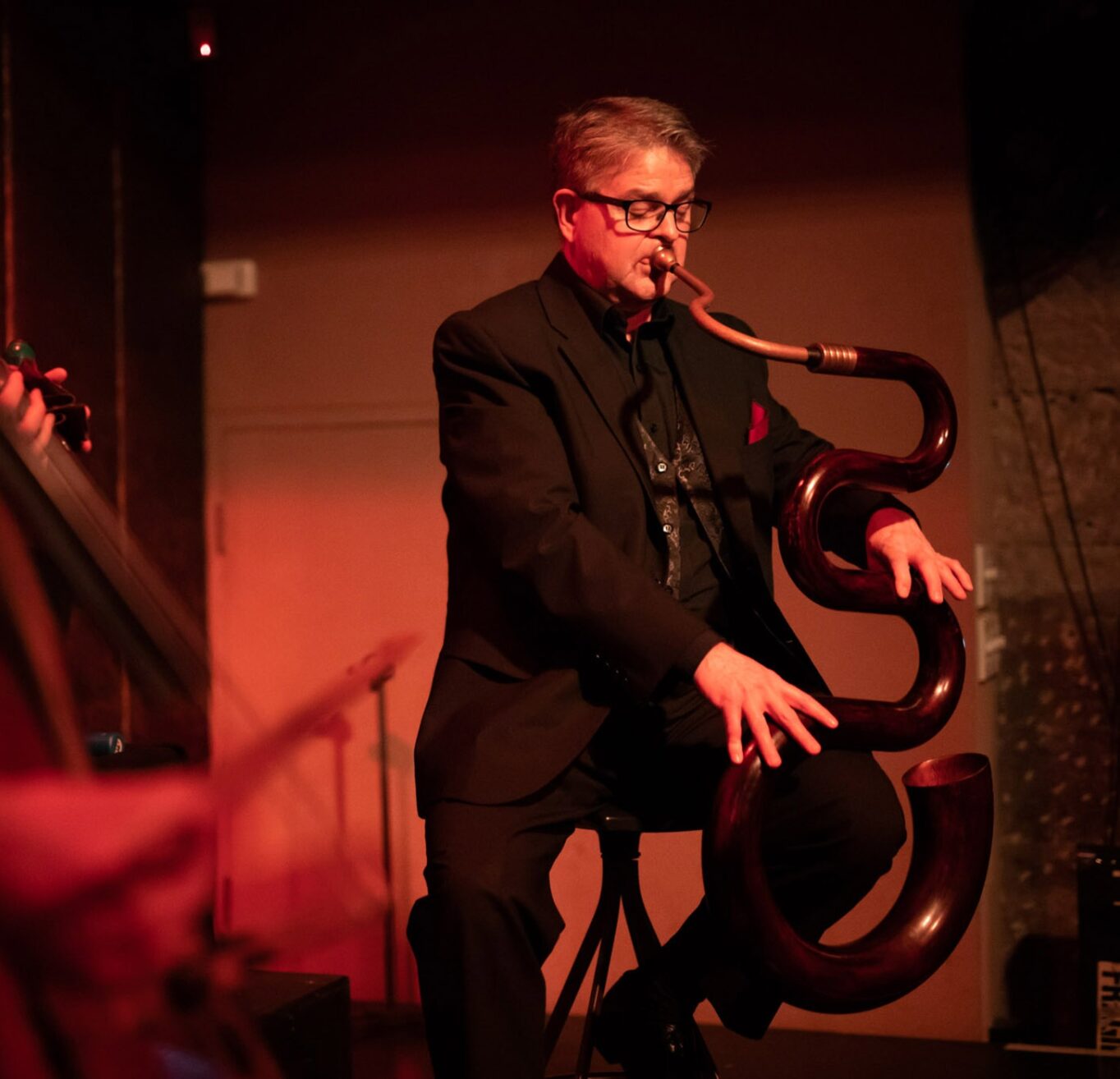
Q&A with Scott Kinmont
18 May, 2020
When we shared Scott Kinmont’s home performance of La Volta on the serpent, the unusual instrument piqued your interest!
We asked Scott to help answer all your questions and shed some light on the challenges and rare sightings of the serpent.
Give us a brief history of the serpent and its origins.
The serpent was invented by a French monk in 1590 to assist in supporting his choir while they were singing plainchant. This was its primary role until the early 19th century. At different times, composers tried using it as the lowest voice of the brass family in orchestras and military bands, however it was quickly superseded by a 19th century invention, the ophicleide (or ‘keyed serpent’) and then by valved brass instruments, such as the euphonium and tuba.
What’s the reputation of the serpent?
Until this point, many musicians are either unaware of the serpent or see it as a musical oddity that they might have seen in a book or a museum. Because it is difficult to play and hasn’t been used a great deal, historically it hasn’t had a great reputation. When Handel first heard it, he declared ‘aye, but this is not the serpent that could have tempted Eve…’ (it was not a compliment). However, I’m finding that the more people hear its unique sound, the more they have an interest in it. I have noticed over the past twenty years a resurgence in players and instruments, so who knows? Maybe the 21st century will be the Serpent Century!
Scott Kinmont performs Praetorius
You'll be dancing along in no time to Scott Kinmont's rendition of Terpsichore: La Volta.
When did you learn how to play the serpent?
As a student, I was always fascinated when I saw illustrations of the instrument in textbooks but was frustrated that I had never seen or even heard one. In my thirties I heard a trombonist with the Melbourne Symphony Orchestra, Ian Perry, play one in a recital and I was captivated by the sound – not quite woodwind, not quite brass. About ten years ago when he retired from playing, I was lucky enough to secure his instrument. For some years it had been little more than a hobby, but more recently I’ve taken the instrument more seriously as I have had the good fortune to hear some wonderful players who have convinced me that it is possible to play it well!
How similar is playing the serpent to the trombone?
The only link the serpent has to the trombone is the mouthpiece. You produce sound in a similar way by vibrating the lips through a mouthpiece, but even here there are subtle differences. Every note needs to be brought into tune by subtly adjusting the lips, which you avoid doing on the trombone.
What is the biggest challenge playing the serpent?
Intonation! Trying to get the instrument in tune is difficult because the holes are drilled according to where your fingers can reach, not necessarily for the acoustic placement of getting them in tune. Also, the instrument is fundamentally unstable – the relationship of the size of the tube (which is very wide) to the size of the holes (which are quite small) means that it is difficult to focus the sound and the pitch. The end result is that it keeps me very humble.
What are some Sydney Symphony performances you’ve played the serpent in?
I have had the opportunity to perform on three occasions now: once in an early Wagner overture (Rienzi), once in Mendelssohn’s Reformation Symphony and once with my excellent colleagues David Campbell and Mark Robinson in an improvised trio for serpent, double bass and percussion based on a plainchant by the 11th century composer, Hildegaard von Bingen as part of the Sydney Symphony’s Cocktail Hour series.
What type of music does the serpent most commonly feature in?
The serpent really only dips its toe in the orchestra repertoire – a handful of works, mostly from the early-mid 19th century. It most commonly appears in Renaissance chamber works and as a support for choirs singing plainchant. While it fell into almost complete disuse for over a century, its unique appearance and sound have seen it reappear in original instrument ensembles and movies – most recently The Hobbit.
What’s something not commonly known about the serpent?
There are only three known serpent players in Australia. The only instrument in Sydney (that is not in my home) was last seen in a display in the Powerhouse museum for something to do with a treasure hunt for kids… not with the musical instrument section (sigh).